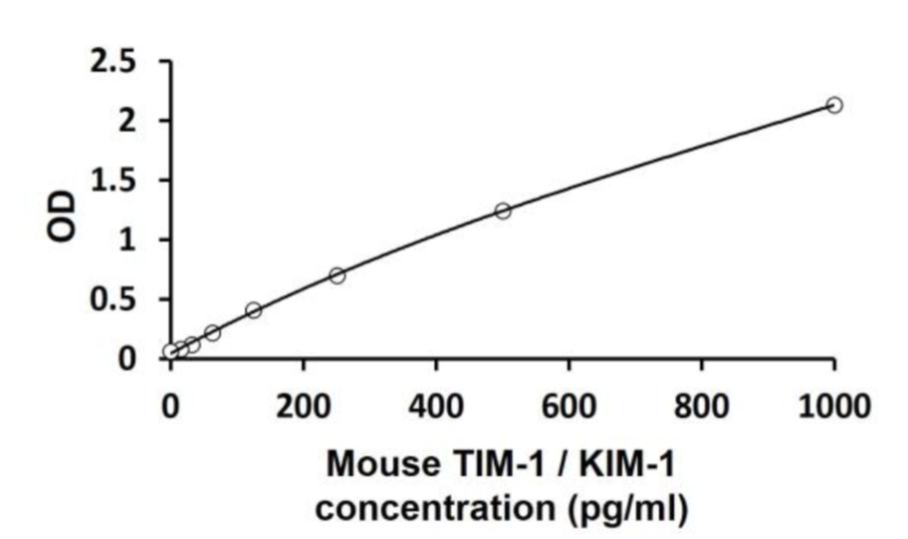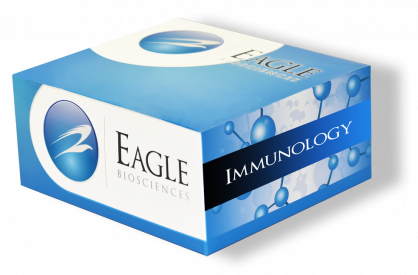Mouse TIM-1 / KIM-1 ELISA Assay Kit
For Research Use Only
Size: 1×96 wells
Sensitivity: 8 pg/ml
Dynamic Range: 15.6-1000 pg/ml
Incubation Time: 3.5 hours
Sample Type: Serum, Plasma, Cell culture Supernatants
Sample Size: 100 µL
$755.00
The Eagle Biosciences Mouse TIM-1 / KIM-1 ELISA Assay Kit is intended for the quantification of Mouse TIM-1 / KIM-1 in serum, plasma, cell culture supernatants. The Mouse TIM-1 / KIM-1 ELISA Assay Kit is for research use only and should not be used for diagnostic procedures.
For Research Use Only
Size: 1×96 wells
Sensitivity: 8 pg/ml
Dynamic Range: 15.6-1000 pg/ml
Incubation Time: 3.5 hours
Sample Type: Serum, Plasma, Cell culture Supernatants
Sample Size: 100 µL
TIM-1 / KIM-1 is a membrane receptor for both human hepatitis A virus (HHAV) and TIMD4. The encoded protein may be involved in the moderation of asthma and allergic diseases. The reference genome represents an allele that retains a MTTVP amino acid segment that confers protection against atopy in HHAV seropositive individuals. Alternative splicing of this gene results in multiple transcript variants. Related pseudogenes have been identified on chromosomes 4, 12 and 19. TIM-1 / KIM-1 may play a role in T-helper cell development and the regulation of asthma and allergic diseases. Receptor for TIMD4 (By similarity). In case of human hepatitis A virus (HHAV) infection, functions as a cell-surface receptor for the virus. May play a role in kidney injury and repair.
This assay employs the quantitative sandwich enzyme immunoassay technique. An antibody specific for TIM-1 / KIM-1 has been pre-coated onto a microtiter plate. Standards or samples are pipetted into the wells and any TIM-1 / KIM-1 present is bound by the immobilized antibody. After washing away any unbound substances, a biotin-conjugated antibody specific for TIM-1 / KIM-1 is added to each well and incubate. Following a washing to remove unbound substances, streptavidin conjugated to Horseradish Peroxidase (HRP) is added to each microplate well and incubated. After washing away any unbound antibody-enzyme reagent, a substrate solution (TMB) is added to the wells and color develops in proportion to the amount of TIM-1 / KIM-1 bound in the initial step. The color development is stopped by the addition of acid and the intensity of the color is measured at a wavelength of 450nm ±2nm.The concentration of TIM-1 / KIM-1 in the sample is then determined by comparing the O.D of samples to the standard curve.

